UNESCO sights
Elite Servicehas prepared a very original program for you, which introduces its participants to all sights in the Czech Republic that are on UNESCO?s World Cultural and Natural Heritage list. In the Czech Rebublic there are 12 UNESCO sights. This is makes for a splendid collection of architectural treasures and amazing natural wonders. Based on your requirements we can exclusively arrange a visit to all of these places, or only a selection of them.
Map of UNESCO Sights: http://en.czech-unesco.org/
- Prague
- Kutná Hora
- Český Krumlov
- Kroměříž
- Telč
- Litomyšl
- Holašovice
- Třebíč
- Brno
- Olomouc
- Lednice ? Valtice Area
- Žďár nad Sázavou
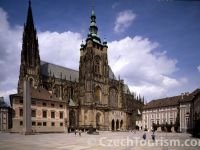
Prague
The most important item on the UNESCO list in the Czech Republic is Prague. Prague is an important urban monument reservation. The historic core, 866 hectares in size, encompasses the unique city ensemble of the Prague Castle and Hradčany with the Cathedral of St. Vitus, Malá Strana (Lesser Side) including Karlův most (Charles Bridge), Staré Město (Old Town) with Josefov (the preserved section of the former Jewish Town), Nové Město (New Town), Vyšehrad and each of the monuments within these areas. Each part of the historical downtown was developed from the 10th century onwards. Many churches and palaces were also constructed which together form a magnificent architectural, artistic and spiritual ensemble.
It was inscribed in the UNESCO List in 1992.
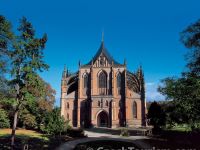
Kutná Hora
Kutna Hora is a picturesque town in Central Bohemia. Since the end of the 13th century the history of Kutná Hora has been inseparably linked to the mining of silver ore. The historical centre is an architectural jewel of European importance, and the late gothic Church of St. Barbora and the Cathedral of Our Lady in Sedlec, rebuilt in the baroque gothic style, create a gateway to the royal mining city. For its overall beauty the city is called the "Treasury" or the "Jewel of the earth." Since 1995, it belongs to the UNESCO World Heritage list.
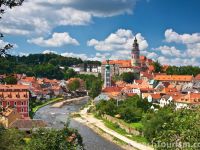
Český Krumlov
Český Krumlov is a lively, cosmopolitan town with a unique atmosphere surrounded by unspoiled countryside. Dominated by a Castle stretching over the meandering Vltava River, Český Krumlov?s narrow cobblestone streets wind along romantic nooks between patrician houses where you?ll find attractive exhibits of world-renowned artists, music festivals, concerts, and theatre performances. It was a seat of the powerful Rožmberk and Schwarzenberg families, who greatly influenced Czech history, and now houses rich historical collections. In the castle gardens you cannot miss the unique castle theatre with it rotating auditorium and the château garden. Český Krumlov has been rightly protected by UNESCO since 1992.
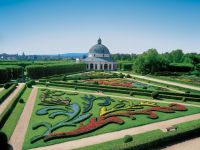
Kroměříž
Kroměříž is beautiful city with a rich history, which is located about 32 km southeast of Olomouc in the Zlín region. Kroměříž was established as a market town at the crossroads of trading routes. At the time of the church colonisation in the first half of the 12th century it became the property of the Bishops of Olomouc. The village was elevated to town status in the second half of the 13th century, but the religious wars of the 14th century inflicted terrible wounds on it. The year 1848 was a milestone in the town?s history, when the Constituent Assembly of the Austrian Monarchy was transferred here, and a period of progress began, which elevated the town to the highest levels of spiritual culture and art. It is not only interesting for its history and architecture, but also for the surrounding nature, which offers visitors a large number of options for spending their free-time. Each year the city plays host to a numerous music festivals, exhibitions, conferences and congresses, and the gardens and château were inscribed in the UNESCO World Cultural and Heritage List in 1998. The castle was built on earlier foundations in the 17th century and represents a uniquely preserved Central European baroque princely residence. Its neighbouring gardens include the Podzamecká garden under the castle in a natural English-style landscape and the early=baroque Flower Gardens.
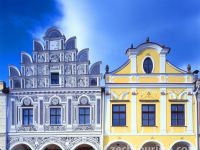
Telč
Telč is a picturesque historic town in the Highlands, at the south-west of Moravia, half-way between Prague and Vienna.The city has many beautiful cultural and historical monuments, which create an urban conservation area. The city was built on the original foundations following a devastating fire at the end of the 14th century. A number of the renaissance and baroque townhouses remain to this day strengthened by a protective system of ponds. The gothic castle was rebuilt in the renaissance style at the end of the 16th century. Along with Telč Castle, the center of the city was added to UNESCO?s list in 1992.
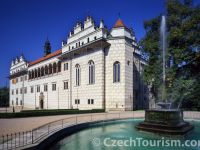
Litomyšl
Litomyšl was established around the trade route that connected Bohemia and Moravia at the end of the 10th and beginning of the 11th centuries. The dominant feature of the city is the Italianate Renaissance castle with its more than 8,000 examples of sgrafitto, which has been on the UNESCO World Cultural and Heritage List since 1999. Litomyšl is the birthplace of the world famous composer Bedřich Smetana, whose name is commemorated by an annual opera festival. On the 500-metre-long square a Gothic town hall and a number of Renaissance and Baroque houses can be found. A walk through the historical streets ending in the monastery gardens is an unforgettable experience.
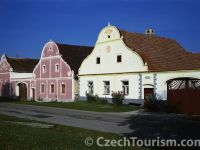
Holašovice
Holašovice is a village located in South Bohemia in České Budějovice district. The village is part of a larger community called Jankov. A unique set of buildings built in the style of ?Folk Baroque? adorn Holašovice. Stemming from the 1870?s, they form a unique whole, which has been a village conservation area since 1995 and was registered as a UNESCO World Heritage Site in 1998.

Třebíč
Třebíč made it onto the UNESCO list in 2003 due to its Jewish Quarter and the Basilica of St. Procopius. The paradox is that these monuments have been preserved thanks to the decision of the previous regime to demolish the Jewish ghetto, making remained preserved and no unskilled construction impacts. These were the latest Czech monuments to be registered on UNESCO?s World Heritage List so far.
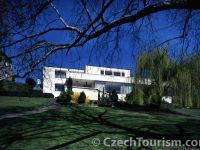
Brno
Brno is the second largest city in the Czech Republic. It is situated in South Moravia on the highway between Prague and Vienna. The Villa Tugendhat, a functionalist architectural masterpiece by Mies van der Rohe designed in 1928, is located in Brno-North and has been on the UNESCO World Heritage List since 2001.
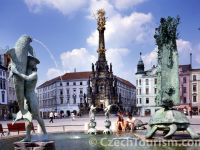
Olomouc
Olomouc lies at the heart of the Haná region, and is and always has been one of the most important cities in Moravia, where history has gone hand-in-hand with its people, science and progress. Plague columns were common in Central Europe of the 18th century, but Olomouc?s famous Plague Column differs from all similar monuments in its creative concept, wealth of decoration and finally its dimensions and height . The consecration of the 35 metre-high column on 9th September 1754 was attended in person by the then first couple of the Monarchy, Empress Maria Teresa and her husband Francis I, Holy Roman Emperor, Duke of Lorraine. The Holy Trinity Column was inscribed in the UNESCO list in 2000.
Lednice ? Valtice Area
The Lednice-Valtice Cultural Landscape is spread over the site of a mighty 12th century border castle. Today it is the home of a romantic château, a picturesque village and in particular a jewel of landscape architecture of unprecedented proportions. The noteworthy milestone at the beginning of the long period of development of this whole area is the end of the 14th century, when the Liechtenstein family obtained a share of the land. The current area, measuring almost 300 km2, is the result of landscaping based on English parks, and thanks to this baroque architecture meets the neo-gothic château and small follies in the romantic style. The Ledice-Valtice Cultural Landscape, as one of the treasures of UNESCO?s World Cultural Heritage, was inscribed in its list in 1996.
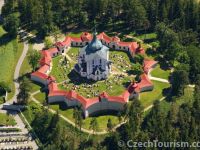
Žďár nad Sázavou
Žďár nad Sázavou was originally a market town, established on an ancient regional route, and at its inception it was closely linked with the establishment of a Cistercian monastery in 1252. The town was elevated to city status at the beginning of the 17th century. Today the city plays host to several cultural and social events, and for tourists it offers a whole range of active recreation options thanks to its advantageous position. The Pilgrimage Church of St. John of Nepomuk at Zelená Hora was inscribed in the UNESCO List in 1994. The building, which dates from the beginning of the 18th century, is one of the finest projects by the architect Jan Blažej Santini-Aichl (1677-1723), and is also an example of ?baroque gothic?. The church, which is not large in size, defies all description, and this is sufficient reason to make a visit to see it with your own eyes.




